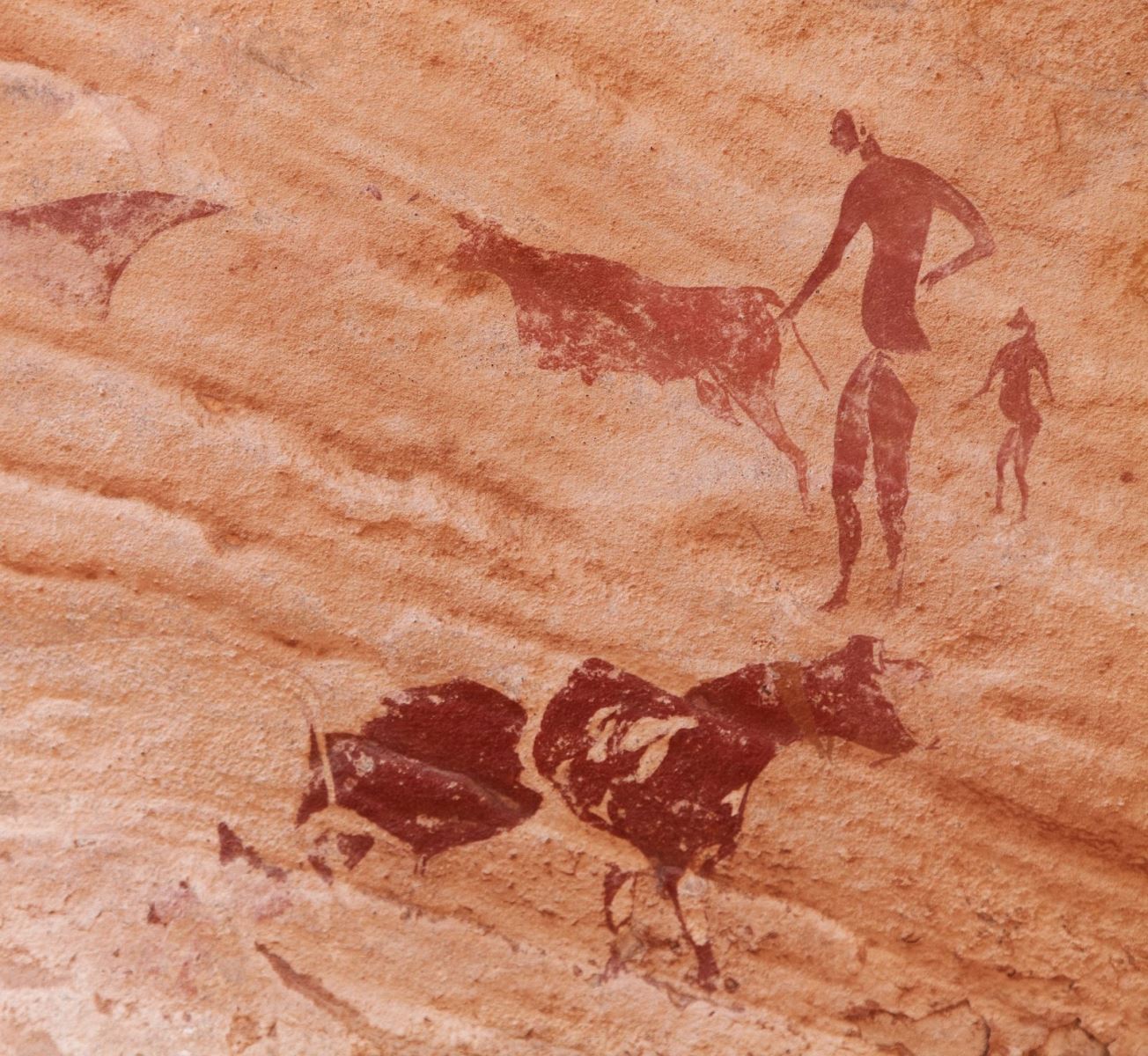This fertile land, Egypt, daughter of the Nile, irrigated by its waters for thousands of years, was not in that remote past the land we know now. Egypt was once part of a huge ocean floor; however, the ocean abandoned it, allowing a new form of life to thrive on its surface in a world mastered by a creature endowed by our Creator with a mind that understands, thinks, and stores knowledge.
Despite abandoning the land, the ancient ocean left its significant mark in the depth of the deserts in the form of fossilized marine creatures, tiny, small, or huge, reaching the size of enormous whales of different types and species. Fossils include whales that sauntered on legs before turning into fins, when the whales refused to stay on land, leaving it with the receding water, or preferring to die in its place rather than experiencing the unknown.
The land turned into a forest and pasturage for different wild animals, including gigantic dinosaurs that shook the land during their quest to eat and drink; there were also small dinosaurs the size of a goat. The wild life continued for thousands of years; it witnessed rainy ages and others icy; the Earth’s crust was still forming, with enormous volcanoes releasing mountains, and grooves cleaved by earthquakes and filled with flood water. Generation after generation, living creatures continued to mutate to adapt with the weather; some survived, while others vanished.
Drought eras hit the land, starting with North Africa; as a result, some animals that were adapted to grass and water migrated South, while others stayed in their habitats, surviving with small amounts of water and grass, living around fresh water lakes that were formed during the rainy eras. At that time, there was a small freshwater stream that fed some tributaries coming from Red Sea mountains. The stream joined another larger stream coming from the depths of Africa and fed by many tributaries. Once threatened with extinction due to rain shortage in its eastern tributaries, the stream was resurrected to life with water from the South, later becoming its only source of water, along with some residue deposited by the river at the end of each journey, forming the greatest river delta on Earth.
Year after year, the river flooded, creating fertile land on its banks as black as Africa, which was and still is the epitome of Egypt’s life. When did Egyptians emerge? When did this civilization start? The answer is in the Western Desert, where many places inhabited by cave-dwellers were revealed. Thousands of years ago, before cave-dwellers migrated to the River banks, he was living among wild creatures, digging caves and inhabiting them. He built snares to hunt big animals, managed his family demands from the available water, game and animal meat, and the delicious fruits and plants he found on trees.
This primitive man developed his life, starting with his tools, which he kept developing until they reached perfection; some even were considered pieces of art. He observed the Universe and learnt about his abilities and uniqueness, which led him to great inventions, such as, the stone weapon that could be attached to a wooden stick to form a hammer, an arrow, or a spear; the dry twigs that could be used to ignite a fire for cooking or heating.

The very first advantages of fire was its influence on the shape of Man himself; his sharp teeth and fangs in his big jaw began to be reformed bit by bit. His jaw became smaller than before, and his teeth became small and well-formed. Man liked his looks, and women started to wear jewelry made from shells and colored stones, even hair had ivory combs.
There has always been a strong motive for Man to develop whenever he can. The Western Desert discoveries prove the existence of Egyptians 35,000 years ago, in addition to the burial grounds that included creatures other than Man, which reflects the existence of religious and ideological thought back then. Fossils proved that Man existed during the Pastoral Period, when he domesticated animals.

When the rain receded, Man started to live next to the River. From the very beginning, the eternal bond between the Egyptian citizen and the Nile River started; a relationship that was never disrupted by either a riptide or years of strife and staleness from the immortal River, which has inspired Egyptian artists then and now. As a result, it became the common gene among all Egyptians; Pharaohs kings, nobles, the rich and the poor, they all drank from its water.
*The article was first published in print in SCIplanet, Spring 2017 Issue "Earth Sciences".